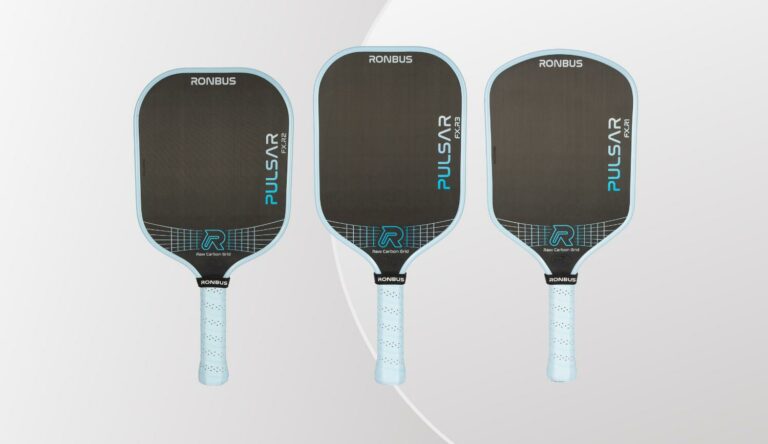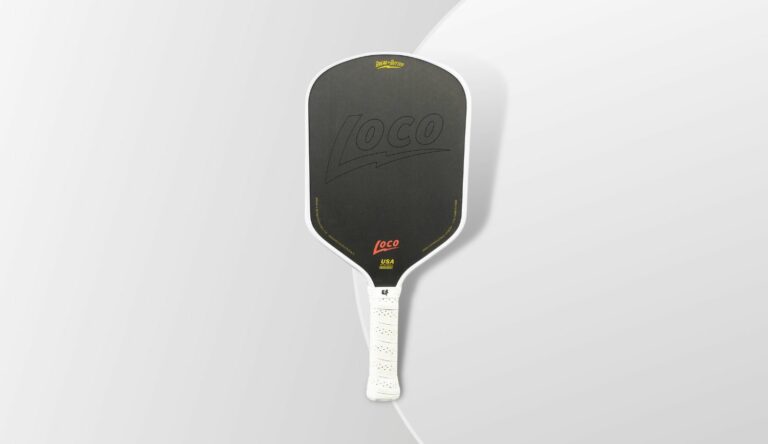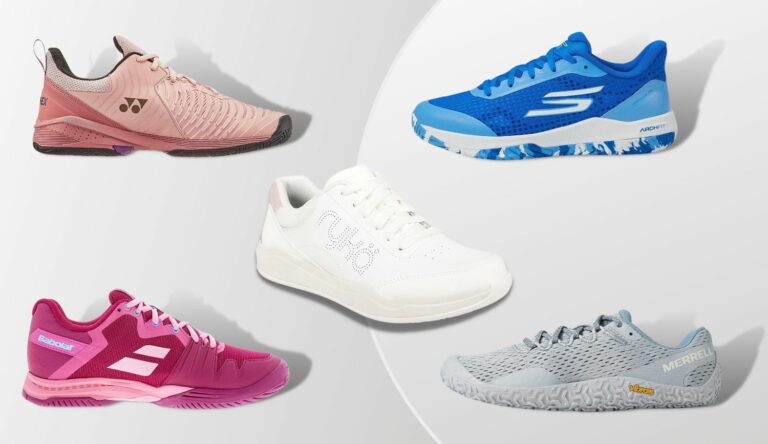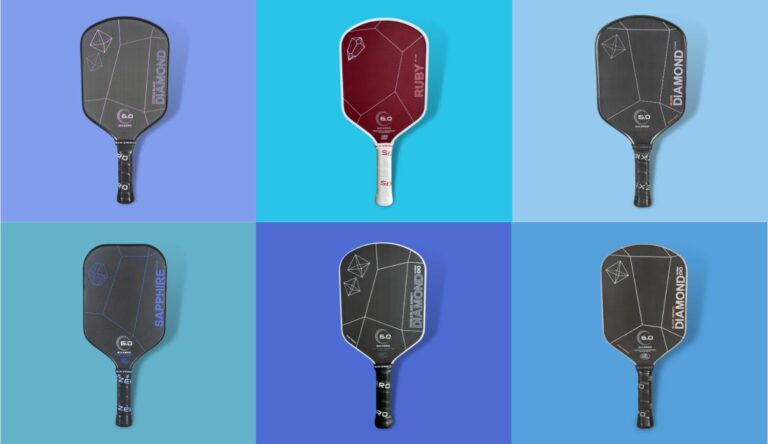A lot of people are curious if pickleball is bad for the back.
The answer is, yes: it can be. But, there are steps you can take to prevent back strain and injury while playing pickleball.
Have you found yourself experiencing back pain after playing pickleball?
Is your lower, mid, or upper back always stiff after hours of dinking or swinging those big 2-handed backhands?
Many of us play this sport to get a break from more demanding sports that left us injured and sidelined. This makes pickleball-related pain such a drag.
The reality is that injuries and chronic pain can affect any player – from 25-year-olds to older players who’ve gone through back surgeries.
But pickleball-related back pain can be prevented, and this post covers everything you need to know about it.
You’ll learn exactly what to do to stop back pain in its tracks so you can leave discomfort behind and focus on the game.
Contents
- How to prevent back pain while playing pickleball
- 1. Warm-up properly
- 2. Wear proper court footwear
- 3. Use an elongated paddle
- 4. Add a ball retriever to your paddle
- 5. Dink with proper form
- 6. Keep an eye on your fluid intake
- 7. Build strength (especially core & leg strength)
- 8. Release chronically tight muscles
- 9. Get checked out by a physical therapist
- 10. Know your limits
- Conclusion
How to prevent back pain while playing pickleball
If you want to prevent or stop back pain, you’ll need to understand what causes it in the first place.
Once you know what causes it, you can implement strategies to avoid potential pain-causing issues in the future.
Here are 10 tips that cover causes and solutions to pickleball back pain.
Let’s dive in.
1. Warm-up properly
If you want to avoid pain from playing pickleball, you should always warm up properly.
And, no. Dinking for 3 minutes before starting a game does not count as an adequate warm-up for injury prevention.
It’s best to do about 10 minutes of proper pickleball warm-up exercises before you start getting into a competitive game.
If you’re prone to injuries, you might extend your warm-up routine beyond 10 minutes.
Your back, and the rest of your body, will thank you.
Dynamic stretching is far superior to static stretch pre-cardio. Low-impact dynamic stretching helps warm up the quick twitch muscles and better prevents accident stretching-related injuries.
Static stretching, while okay to employ post-workout, can cause injuries if done in your initial workout. But dynamic stretching, like yoga-type flows that build into deep stretches, are also excellent post-game.
2. Wear proper court footwear
Your shoe choice matters when it comes to maintaining a healthy back when playing pickleball.
Court shoes are essential, as the wrong type of footwear (such as running shoes) can lead to chronic knee and back pain/injuries.
Proper support, insoles, and inserts can make the difference between maintaining good back health, as well.
3. Use an elongated paddle
A lot of pickleball-related back pain is caused by bending over for low balls.
Fortunately, there are elongated pickleball paddles on the market that give you more reach, making you have to bend less to get those hard-to-reach shots.
4. Add a ball retriever to your paddle
Constantly picking up balls off of the ground can be problematic for the back, especially for older players.
The repetitive motion of bending down to pick up balls can be a big factor that causes havoc for an injury-prone back, hips, or knees.
Luckily, manufacturers have created “pickleball retriever” attachments that clip onto the bottom of your pickleball handle.
These retrievers allow you to pick up a ball off the ground with far less effort and bending than usual. We’ve have a whole a post about pickleball paddle-retrievers.
5. Dink with proper form
Dinking is an essential component of pickleball that can be fun and rewarding.
But all of the squatting that dinking requires can take a toll on your body, especially your lower back.
And if you use an improper dinking form, you can almost guarantee that you’ll develop a stiff back – or worse – over time.
6. Keep an eye on your fluid intake
Many pickleball players are surprised when their bodily pains subside when they focus on drinking more water.
Aside from b being a major contributor to muscle strains, dehydration can have major negative effects on all aspects of our life.
So keep up on your water intake during pickleball play, as well as all day long, both before and after exercise.
Electrolytes are also a great addition to your sports nutrition regimen and are highly recommended to keep your back muscles nourished and relaxed.
Combined with plenty of water, they’ll help keep you loose, limber, and feeling good for hours of play.
7. Build strength (especially core & leg strength)
Weak muscle definition can put excessive strain on injury-prone areas of the body, like the back and knees.
To protect your back from injury, it’s a good idea to focus on strengthening your core to support your spine’s ability to handle the stress of an intense pickleball game.
Strengthening your legs, especially your quads and hamstrings, will help you from needing to overcompensate with your back muscles.
Wall sits offer a great way to improve your upper leg muscle definition, and light kettlebell workouts that involved lifting and swinging are excellent for lower back protection and stability.
8. Release chronically tight muscles
When you have back pain, it’s rarely just your back muscles that are tight.
There are other muscle groups that tend to get really tight and can directly contribute to your back pain.
The leg muscles have been mentioned already. It’s always good to stretch and loosen up the quads/hamstrings and calves.
But other muscle groups like the glutes and hip flexors can play a big role in pickleball-related back pain.
Sometimes a thing called anterior pelvic tilt (which there are stretching routines for) can be the culprit, or just years of strain that’s added up.
My absolute favorite way to release tight muscle groups is to use a percussion massage gun. Using a massage gun regularly has been an absolute game-changer for me.
Practices like yoga and physical therapy routines are also fantastic supports. Any targeted, deep-stretching practice added to your daily life will do wonders, and not just for your back, but for your whole body.
9. Get checked out by a physical therapist
If you’re experiencing back pain regularly and have access to a physical therapist, make use of it.
Getting checked by a professional can be a huge difference maker. I know people who’ve had herniated discs that they didn’t know about. And waiting to get checked out resulted in them requiring difficult surgery that could have been avoided.
So if you’re serious about pickleball, get serious about fixing mechanical problems and tight muscles with a professional.
10. Know your limits
Lastly, even with all of the tips listed above, there are still limits we’ll have to face and respect if we want to stay healthy and pain-free.
If you’re getting pain after playing for three hours straight, try cutting your game time down to one or two hours.
If you’re getting pain after playing 5 times a week, cut down to 2 or 3 times a week.
We all love pickleball and the outlet it provides us both physically and mentally, but we need to look at the long game.
If you push yourself too hard now and blow out your back or a knee, you’ll be sorry for it later. I’ve known a number of people who’ve done this, and I promise, you don’t want to be in that situation.
Conclusion
I hope the tips in this article help you alleviate your back pain for good.
If you’re still struggling with pain after employing most or all of the tips above, please take it seriously and visit a doctor or physical therapist.
Good luck!






